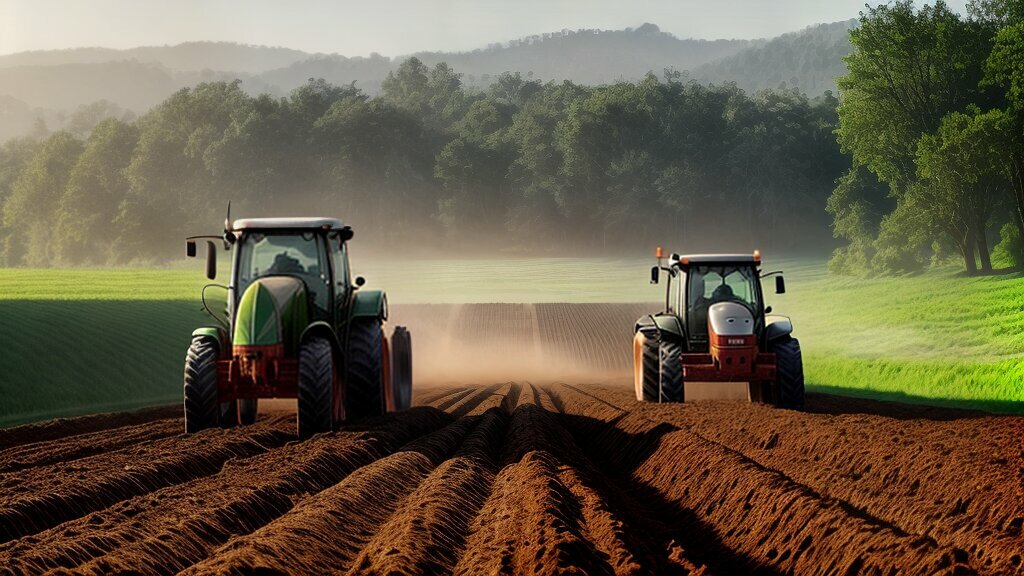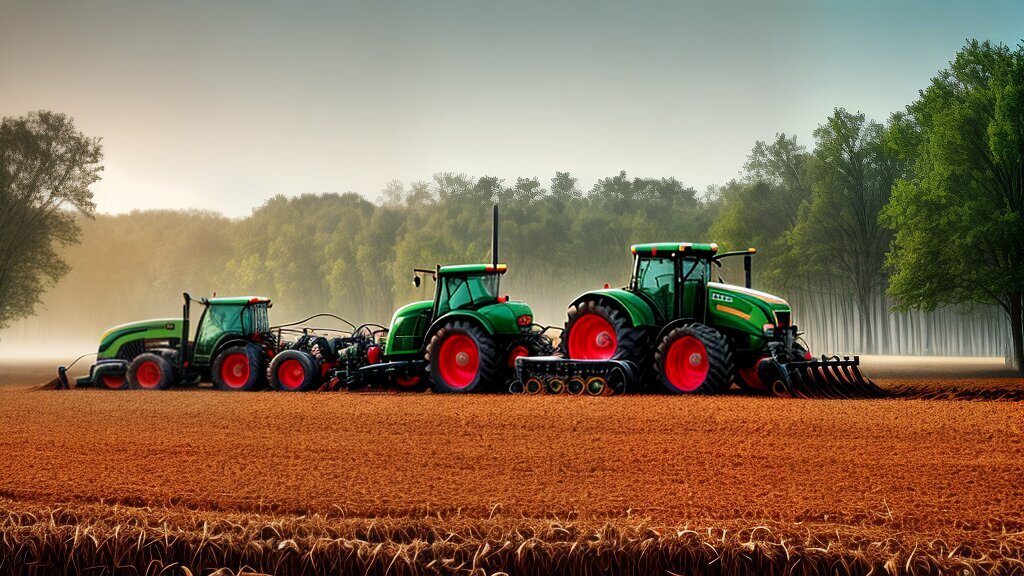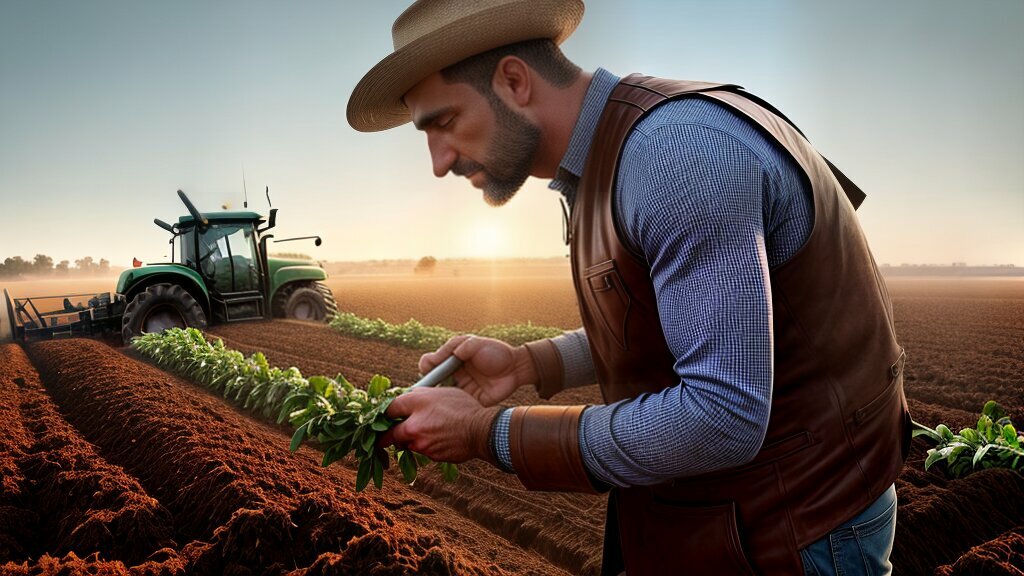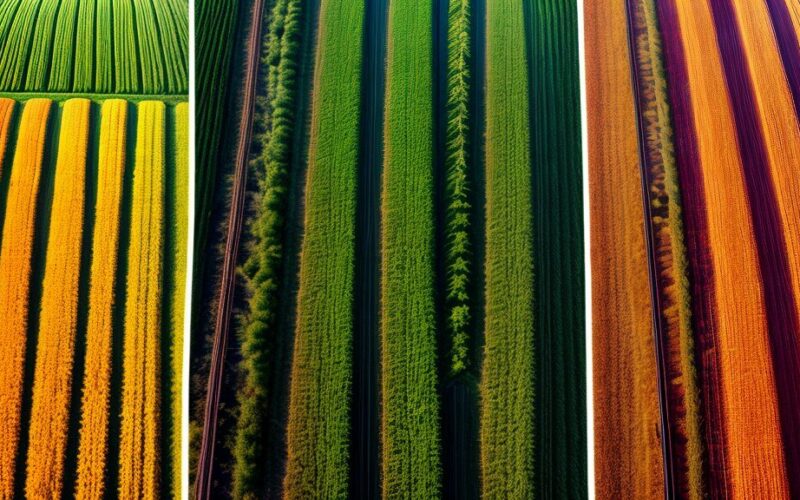As a farmer, it’s important to understand the various techniques used in agriculture. Two of the most common methods are plowing and tilling. Although they may seem similar, there are significant differences between these two practices. Knowing when to use each technique and how it affects your soil can greatly impact your crop yield.
In this article, we will explore and compare plowing and tilling, highlighting their benefits and drawbacks. By the end of this article, you will have a better understanding of how to choose the most appropriate farming method for your crops.
Key Takeaways:
- Plowing and tilling are two common farming techniques
- There are distinct differences between plowing and tilling that can affect your crop yield
- Knowing when to use each technique and how it affects your soil health is crucial for agricultural success
Understanding Plowing
When it comes to farming, plowing is one of the oldest and most traditional techniques used for soil preparation. It involves using a plow to turn over the top layer of soil and break it into smaller, more manageable clumps. This process is typically done in the fall or early spring, before planting.
The primary purpose of plowing is to loosen and aerate the soil, making it easier for plant roots to penetrate and absorb nutrients. It also helps to control weeds and pests by burying them in the soil. Additionally, plowing can improve soil drainage and reduce erosion.
Fun fact: The earliest plows were made from wood and pulled by oxen or horses. Today, plows are typically made from metal and attached to tractors or other farm machinery.
| Benefits of Plowing |
|---|
| Loosens soil for better root growth |
| Buries weeds and pests |
| Improves soil drainage |
| Reduces erosion |

However, plowing has some downsides. It can disrupt the soil structure and lead to compaction, which can make it harder for water and air to move through the soil. Plowing can also contribute to soil erosion if not done properly.
When to Plow
The best time to plow depends on several factors, including the type of soil, the weather conditions, and the type of crop you plan to grow. In general, plowing is most effective when done in the fall or early spring, while the soil is still moist but not wet. This allows for easier digging and less soil compaction.
Tip: It’s important to avoid plowing when the soil is too wet, as this can cause soil compaction and damage to soil structure. If the soil is too dry, plowing can be difficult and may lead to clumping.
In summary, plowing is a tried and true farming technique that has been used for centuries. It can improve soil health and promote crop growth, but it’s important to consider the downsides and timing of plowing to ensure that it’s done properly and effectively.
Exploring Tilling
While plowing involves overturning the soil in a single direction, tilling involves breaking up the soil and aerating it with a variety of tools, such as cultivators, harrows, or rototillers. Tilling is often done after plowing and is used to further prepare the soil for planting and to control weeds.
In contrast to plowing, tilling involves breaking up the soil into smaller clumps, which improves its texture and provides better access to air, water, and nutrients.
One of the primary benefits of tilling is that it helps to distribute organic matter more evenly throughout the soil. As organic matter decomposes, it releases nutrients that plants need to grow. By tilling regularly, farmers can ensure that these nutrients are available to their crops each growing season. Tilling also helps to redistribute nutrients that may have become concentrated in certain areas of the soil, improving overall fertility.
Regular tilling also allows for better water infiltration, which is important for healthy plant growth. By breaking up compacted soil, tilling encourages water to penetrate deeper into the soil, improving moisture retention and reducing runoff.
However, it’s important to note that tilling can also have some negative effects on soil health. Tilling disrupts the natural soil structure and can lead to soil compaction, erosion, and loss of organic matter. Over-tilling can also make the soil more susceptible to weed growth, as it brings dormant weed seeds to the surface.
Overall, while tilling can have significant benefits, it’s essential to use this technique judiciously and to consider the unique characteristics of your soil, crops, and climate when deciding whether or not to till.
| Benefits of Tilling | Disadvantages of Tilling |
|---|---|
| Redistributes nutrients throughout the soil | Can lead to erosion and loss of soil structure |
| Improves soil texture and aeration | Can increase weed growth by bringing dormant seeds to the surface |
| Helps to control pests and disease by burying crop residue | Can damage soil structure and reduce soil fertility |
Comparing Plowing and Tilling
Plowing and tilling are both critical techniques used in farming, but they differ in several ways. While plowing involves turning over the soil and mixing it with crop residues, tilling is a shallow cultivation process that breaks up the soil surface.
One of the primary differences between plowing and tilling is the depth of soil disturbance. Plowing involves deeper soil overturning, which can disrupt the soil structure and reduce its water-holding capacity. In contrast, tilling is a shallower cultivation that preserves the soil structure and enhances its porosity, allowing for better aeration.
Another key difference is the impact of each technique on soil erosion. Plowing can contribute to soil erosion by exposing the soil surface to the elements and removing the protective cover of crop residues. Tilling, on the other hand, can help reduce erosion by leaving some crop residue on the soil surface.
However, both plowing and tilling can have positive effects on soil health. Plowing can help break up compacted soil and improve the soil’s ability to absorb nutrients and hold water, while tilling can help incorporate organic matter into the soil and enhance nutrient availability.
Ultimately, the choice between plowing and tilling depends on several factors, including soil type, crop rotation, and the farmer’s objectives. If you are looking to enhance soil health and reduce erosion, tilling may be a more suitable option. On the other hand, if you need to break up compacted soil or incorporate crop residues, plowing may be the best choice.

Regardless of which technique you choose, it’s essential to ensure that you are not overusing either method. Continuous plowing or tilling can lead to soil degradation and reduce the soil’s quality over time. Therefore, it’s essential to evaluate both techniques carefully and use them strategically to promote long-term soil health and productivity.
Factors Influencing the Choice
When it comes to deciding between plowing and tilling, several factors need to be considered to make the right choice. Here are some crucial factors that can influence your decision:
- Soil Type: The type of soil you have in your farm can significantly affect your decision. For example, sandy soil may only require tilling while heavier soils may benefit more from plowing.
- Crop Rotation: Crop rotation can also influence your decision, especially if you’re planting different crops in the same field. For instance, if your current crop requires loose soil, tilling may be a better option.
- Equipment Availability: The equipment you have at your disposal can also determine which method you use. Plowing may require heavier equipment while tilling may only require light-duty machinery.
- Time of Year: The time of the year can also affect your decision. If you’re planting a winter crop, tilling may be sufficient, while plowing may be necessary for a spring crop.
By considering these factors and assessing your farm’s unique needs, you can make an informed decision on whether to plow or till.

Conclusion
Congratulations! You now have a better understanding of the key differences between plowing and tilling. By familiarizing yourself with these farming techniques and their benefits, you can make informed decisions to optimize your agricultural success.
Remember, plowing is typically performed before planting to break up the soil, increase aeration, and improve drainage. Tilling, on the other hand, is often preferred for maintaining soil structure and fertility throughout the growing season.
When deciding between plowing and tilling, consider factors such as soil type, crop rotation, and desired outcomes. Whether you opt for plowing or tilling, both techniques play a critical role in modern farming and contribute to a more sustainable agricultural industry.
Thank you for reading, and happy farming!





